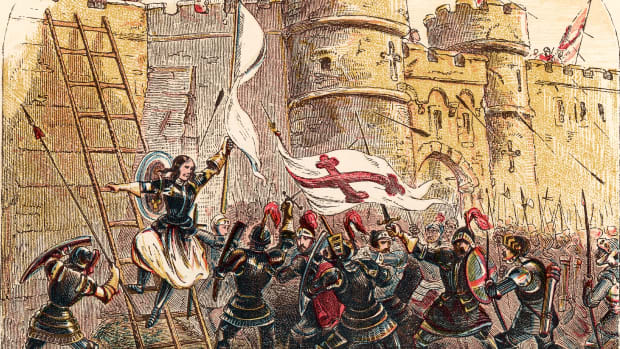The Coming Middle Ages
Foreign Policy |

The middle of the 21st century will resemble nothing so much as the Middle Ages of the 5th to 15th centuries, from the sacking of Rome by the Visigoths, in 410, to the fall of Constantinople, in 1453. This was a long and uncertain period and thus an ideal metaphor to characterize our times. It was an age of plagues and progress, commercial revolutions, expanding empires, crusades, city-states, merchants, and universities. It was multipolar, with expanding empires on the Eurasian landmass, and apolar, with no one global leader. The new Middle Ages—synonymous with the age of globalization—have already begun.
First let us take the empires. Charlemagne’s efforts to resurrect the Roman Empire have been succeeded, over a millennium later, by the multipronged armadas of Brussels Eurocrats steadily colonizing Europe’s periphery, in the Baltics, the Balkans, and, eventually, Anatolia and the Caucasus. The Eurocrats’ book is not the Bible but rather the acquis communautaire: the 31 chapters of the Lex Europea, which is rebuilding EU member states from the inside out. By 2040, even depopulated Russia, with any luck, will be an EU member and the West’s front line against the far more populous East.
By then, a rebranded, globalizing China will be just a decade shy of the centennial of its civil war’s end, in 1949; the Communist Party has long declared that 2050, not 2008 (the year of the Beijing Olympic Games), will mark the country’s real coming-out party as a superpower. A half century from now, China may still be the world’s most populous country, and if the exploits of its 15th-century explorer–statesman Zheng He are any guide, its demographic, commercial, and strategic presence from Africa to Latin America—to say nothing of its diplomatic and cultural dominance in East Asia—will have substantially increased.
The world’s third center of gravity will be the United States, demographically stable but also more thoroughly amalgamated with Latin America. Almost a century after John F. Kennedy’s Alliance for Progress, the country will have rediscovered its southern neighbors, especially Brazil, for an industrial partnership to boost the Western hemisphere’s competitiveness against Asia—and to achieve energy independence from the Middle East.
What then of the Middle East, the current center of geopolitical travails? Monarchies may still support dreams of a caliphate, but a unified Islamic ummah, such as the Abbasid empire attempted, is unlikely to emerge. Global energy resources will be more diversified than they are today, so oil and petrochemicals will sustain only a modest degree of Arabian cultural expansionism, even if they still support a few Islamic crusades. With something of a reformation under way in parts of the Muslim world, one of the most practiced religions on Earth will be ever more fractured and embedded in diverse geographies, much as Christianity is today.
Meanwhile, the resurrection of the city-state, the most prominent medieval political unit, will continue. To the current list of global cities—Dubai, Hong Kong, London, Los Angeles, Miami, New York, São Paulo, Shanghai, Singapore, and Tokyo—we may add additional globalized nodes, such as Alexandria, Istanbul, and Karachi along major trade routes. Now, as then, city-states are commercial hubs all but divorced from their national anchors, reminding us that corporate actors will be paramount well into the future. City-states will pay for protection as global security privatizes further into corporate hands—the 21st century’s knights, mercenaries, and condottieri. Today’s sovereign-wealth funds, fused with city-state savvy, will be tomorrow’s Hanseatic League, forming capital networks that disperse the newest technologies to nearby regions. Not Oxford and Bologna, but rather Silicon Valley, Singapore, Switzerland, and their like will be the standard-setting centers.
The Middle Ages witnessed a number of innovations—from the cannon to the compass—that were geared to intensified global exploration. In the 21st century, the speed of communication and transport will bring us ever closer to simultaneity. As the ranks of billionaires soar beyond Gates, Branson, and Ambani, mega-philanthropists will become the postmodern Medicis, financing explorations in outer space and the deep sea alike and governing territory and production in the manner of medieval princes.
And, as in the Middle Ages, humanity faces diseases and invasions in the decades ahead. AIDS, malaria, SARS, and other maladies could become plagues like the 14th-century Black Death. What will be the impact of the coming migratory hordes, potentially unsettled by wars and environmental disasters? Who will be the next Mongols—small, concentrated hordes who violently establish their own version of peace, law, and order? How will contemporary diasporas—the millions of Chinese, Indian, Turkish, and Arab peoples living outside their home countries—blend into European, African, and American societies?
Finally, the fundamental reality of the Middle Ages was feudal social stratification, whose return the global economy may be accelerating. In medieval times, diverse power structures—religious, political, military, and commercial—all vied for control in shifting alliances. All of this is true again today and will remain so until a dominant form, like the nation-state in the 16th century, finally emerges. For now, the state is still in flux: declining in the Near East, resurgent in Asia, and almost nonexistent in Africa. Establishing a new system of global governance will take centuries, hence the uncertain leadership and complex landscape of the mid-21st century. The next Renaissance is still a long way off.